-
Reagents
- Flow Cytometry Reagents
-
Western Blotting and Molecular Reagents
- Immunoassay Reagents
-
Single-Cell Multiomics Reagents
- BD® OMICS-Guard Sample Preservation Buffer
- BD® AbSeq Assay
- BD® Single-Cell Multiplexing Kit
- BD Rhapsody™ ATAC-Seq Assays
- BD Rhapsody™ Whole Transcriptome Analysis (WTA) Amplification Kit
- BD Rhapsody™ TCR/BCR Next Multiomic Assays
- BD Rhapsody™ Targeted mRNA Kits
- BD Rhapsody™ Accessory Kits
- BD® OMICS-One Protein Panels
-
Functional Assays
-
Microscopy and Imaging Reagents
-
Cell Preparation and Separation Reagents
-
Training
- Flow Cytometry Basic Training
-
Product-Based Training
- FACSAria Product Based Training
- FACSMelody Product-Based Training
- FACSLyric Product-Based Training
- FACSCanto Product-Based Training
- LSRFortessa Product-Based Training
- FACSymphony Product-Based Training
- FACSDuet Product-Based Training
- HTS Product-Based Training
- BD FACSDiscover™ S8 Cell Sorter Product Training
-
Advanced Training
-
- BD® OMICS-Guard Sample Preservation Buffer
- BD® AbSeq Assay
- BD® Single-Cell Multiplexing Kit
- BD Rhapsody™ ATAC-Seq Assays
- BD Rhapsody™ Whole Transcriptome Analysis (WTA) Amplification Kit
- BD Rhapsody™ TCR/BCR Next Multiomic Assays
- BD Rhapsody™ Targeted mRNA Kits
- BD Rhapsody™ Accessory Kits
- BD® OMICS-One Protein Panels
-
- FACSAria Product Based Training
- FACSMelody Product-Based Training
- FACSLyric Product-Based Training
- FACSCanto Product-Based Training
- LSRFortessa Product-Based Training
- FACSymphony Product-Based Training
- FACSDuet Product-Based Training
- HTS Product-Based Training
- BD FACSDiscover™ S8 Cell Sorter Product Training
- Singapore (English)
-
Change country/language
Old Browser
This page has been recently translated and is available in French now.
Looks like you're visiting us from United States.
Would you like to stay on the current country site or be switched to your country?
BD IMag™ Human Memory CD8 T Cell Enrichment Set - DM

Enrichment of memory CD8+ T cells from human blood. PBMC were labeled with the BD IMag™ Human Memory CD8 T cell Enrichment Set - DM (Cat. No. 560108) and separated on the BD IMagnet™ (Cat. No. 552311) according to the accompanying protocol. To demonstrate the efficiency of the enrichment, for panels A and B, cells were stained with a cocktail consisting of PE-conjugated Anti-Human CD4 (Cat. No. 555347), CD11b (Cat. No. 555388), CD36 (Cat. No. 555455), CD45RA (Cat. No. 555489), CD123 (Cat. No. 551065), CD235a (Cat. No. 555570),and γδ TCR (Cat No. 555717) to detect non-memory cells, and an APC-conjugated Anti-Human CD45RO (Cat. No. 559865) to detect memory cells. For panels C and D, cells were stained with APC-conjugated Anti-Human CD8 (Cat. No. 555369) and a PE-conjugated CD45RO (Cat. No. 555493) to show the percentage of memory CD8+ T cells. Dead cells were excluded by staining with 7-Amino-actinomycin D (7-AAD)(Cat. No. 559925). Flow cytometry was performed on a BD FACSCalibur™ flow cytometry system.
Please refer to the Enrichment Flow Chart on the next page to identify the cell populations represented in this figure. The percentage of memory CD8+ T cells is indicated in each panel. Panels A and C show the unseparated PBMC while panels B and D show the twice-enriched fraction after three 6-minute magnetic separations with an additional 10-minute separation.



Enrichment of memory CD8+ T cells from human blood. PBMC were labeled with the BD IMag™ Human Memory CD8 T cell Enrichment Set - DM (Cat. No. 560108) and separated on the BD IMagnet™ (Cat. No. 552311) according to the accompanying protocol. To demonstrate the efficiency of the enrichment, for panels A and B, cells were stained with a cocktail consisting of PE-conjugated Anti-Human CD4 (Cat. No. 555347), CD11b (Cat. No. 555388), CD36 (Cat. No. 555455), CD45RA (Cat. No. 555489), CD123 (Cat. No. 551065), CD235a (Cat. No. 555570),and γδ TCR (Cat No. 555717) to detect non-memory cells, and an APC-conjugated Anti-Human CD45RO (Cat. No. 559865) to detect memory cells. For panels C and D, cells were stained with APC-conjugated Anti-Human CD8 (Cat. No. 555369) and a PE-conjugated CD45RO (Cat. No. 555493) to show the percentage of memory CD8+ T cells. Dead cells were excluded by staining with 7-Amino-actinomycin D (7-AAD)(Cat. No. 559925). Flow cytometry was performed on a BD FACSCalibur™ flow cytometry system.
Please refer to the Enrichment Flow Chart on the next page to identify the cell populations represented in this figure. The percentage of memory CD8+ T cells is indicated in each panel. Panels A and C show the unseparated PBMC while panels B and D show the twice-enriched fraction after three 6-minute magnetic separations with an additional 10-minute separation.

Enrichment of memory CD8+ T cells from human blood. PBMC were labeled with the BD IMag™ Human Memory CD8 T cell Enrichment Set - DM (Cat. No. 560108) and separated on the BD IMagnet™ (Cat. No. 552311) according to the accompanying protocol. To demonstrate the efficiency of the enrichment, for panels A and B, cells were stained with a cocktail consisting of PE-conjugated Anti-Human CD4 (Cat. No. 555347), CD11b (Cat. No. 555388), CD36 (Cat. No. 555455), CD45RA (Cat. No. 555489), CD123 (Cat. No. 551065), CD235a (Cat. No. 555570),and γδ TCR (Cat No. 555717) to detect non-memory cells, and an APC-conjugated Anti-Human CD45RO (Cat. No. 559865) to detect memory cells. For panels C and D, cells were stained with APC-conjugated Anti-Human CD8 (Cat. No. 555369) and a PE-conjugated CD45RO (Cat. No. 555493) to show the percentage of memory CD8+ T cells. Dead cells were excluded by staining with 7-Amino-actinomycin D (7-AAD)(Cat. No. 559925). Flow cytometry was performed on a BD FACSCalibur™ flow cytometry system.
Please refer to the Enrichment Flow Chart on the next page to identify the cell populations represented in this figure. The percentage of memory CD8+ T cells is indicated in each panel. Panels A and C show the unseparated PBMC while panels B and D show the twice-enriched fraction after three 6-minute magnetic separations with an additional 10-minute separation.



BD IMag™ Human Memory CD8 T Cell Enrichment Set - DM

BD IMag™ Human Memory CD8 T Cell Enrichment Set - DM

Regulatory Status Legend
Any use of products other than the permitted use without the express written authorization of Becton, Dickinson and Company is strictly prohibited.
Description
The BD IMag™ Human Memory CD8 T Cell Enrichment Set - DM is used for the negative selection of untouched memory CD8+ T cells from peripheral blood. The Human Memory CD8 T Cell Enrichment Cocktail (component 90-9005456) contains monoclonal antibodies that recognize antigens expressed on naive T cells, CD4 T cells, B cells, NK cells, γ/δ T cells, monocytes, DCs, granulocytes, platelets, and erythroid cells. The BD IMag™ Streptavidin Particles Plus - DM (component 90-9003746) are magnetic nanoparticles that have streptavidin covalently conjugated to their surfaces. With these two components, the BD IMag™ Human Memory CD8 T Cell Enrichment Set - DM avoids the inadvertent activation of the enriched memory helper T cells by using reagents that do not directly bind to those T cells. This Enrichment Set has been optimized for use with the BD IMagnet™, and it contains sufficient reagents to label 10e9 peripheral blood mononuclear cells (PBMC).
The Human Memory CD8 T Cell Enrichment Cocktail contains the following monoclonal biotinylated antibodies:
Anti-Human CD4, clone RPA-T4
Anti-Human CD11b, clone ICRF44
Anti-Human CD36, clone CB38
Anti-Human CD41a, clone HIP8
Anti-Human CD45RA, clone HI100
Anti-Human CD123, clone 9F5
Anti-Human CD235a/Glycophorin A, clone GA-R2 (HIR2)
Anti-Human γδ TCR, clone B1
Preparation And Storage
Recommended Assay Procedures
The detailed Magnetic Labeling and Enrichment Protocol follows. In summary, the Human Memory CD8 T Cell Enrichment Cocktail simultaneously stains naïve T cells, CD4 T cells, NK cells, γ/δ T cells, monocytes, DCs, granulocytes, platelets, and erythroid cells. After washing away excess antibody, BD IMag™ Streptavidin Particles Plus - DM are added to the cell suspension and bind the cells bearing the biotinylated antibodies. The tube containing this labeled cell suspension is then placed within the magnetic field of the BD™ IMagnet (Cat. No. 552311). Negative selection is then performed to enrich for the unlabeled memory CD8 T Cells. Labeled cells migrate toward the magnet (positive fraction), leaving the unlabeled cells in suspension so they can be drawn off and retained (enriched fraction). The negative selection is repeated twice to increase the yield of the enriched fraction. If greater purity is required, negative selection may be performed on the enriched fraction. For clarification of the procedure, the magnetic separation steps are diagrammed in the Enrichment Flow Chart. The positive and enriched fractions can be evaluated in downstream applications such as flow cytometry and tissue culture. The biotinylated antibodies in the Human Memory CD8 T Cell Enrichment Cocktail have been optimized and pre-diluted to provide maximum efficiency for the enrichment of memory CD8 T cells from PBMC.
MAGNETIC LABELING AND ENRICHMENT PROTOCOL
1. Prepare 1X BD IMag™ buffer: Dilute BD IMag™ Buffer (10X) (Cat. No. 552362) 1:10 with sterile distilled water or prepare Phosphate
Buffered Saline (PBS) supplemented with 0.5% BSA, 2 mM EDTA, and 0.1% sodium azide.
2. Prepare PBMC from anti-coagulated human blood, preferably by density gradient centrifugation using Ficoll-Paque™.*
3. Count the cells, and resuspend them in 1X BD IMag™ buffer at a concentration of 50 x 10^6 cells/ml.
4. Add the Human Memory CD8 T Cell Enrichment Cocktail at 5 µl per 1 x 10^6 cells, and incubate at room temperature for 15 minutes. Avoid
nonspecific labeling by working quickly and adhering to recommended incubation times.
5. Wash the labeled cells with a 10X excess volume of 1X BD IMag™ buffer, centrifuge at 300 × g for 10 minutes, and carefully aspirate ALL
the supernatant.
6. Vortex the BD IMag™ Streptavidin Particles Plus - DM thoroughly, and resuspend the cell pellet in 7.5 µl of particles per 1 x 10^6 cells.
Please note that this volume of IMag Streptavidin Particles is higher than that used in most BD IMag™ enrichment sets and that this
Set contains a greater total volume of these particles to account for this difference.
7. MIX THOROUGHLY. Incubate at room temperature for 30 minutes. Avoid nonspecific labeling by working quickly and adhering to
recommended incubation times.
8. Bring the labeling volume up to 20 to 80 x 10e6 cells/ml with 1X BD IMag™ buffer.
9. Transfer the labeled cells to a 12 x 75 mm round-bottom test tube, maximum volume added not to
exceed 1.0 ml. Place this positive-fraction tube on the BD IMagnet™ (horizontal position) for 6 minutes.
• For greater volume, divide the cells into multiple 12 x 75 mm round-bottom test tubes or transfer the cells to a 17 x 100 mm
round-bottom test tube, maximum volume added not to exceed 3.0 ml. Place this positive-
fraction tube on the BD IMagnet™ (vertical position) for 8 minutes.
10. With the tube on the BD IMagnet™ and using a sterile glass Pasteur pipette, carefully aspirate the supernatant (enriched fraction) and
place in a new sterile tube.
11. Remove the positive-fraction tube from the BD IMagnet™, and add 1X BD IMag™ buffer to the same volume as in Step 8. Resuspend the
positive fraction well by pipetting up and down 10 to 15 times (avoid creating bubbles), and place the tube back on the BD IMagnet™ for 6
minutes.
• For 17 x 100 mm tube: Place on the BD IMagnet™ for 8 minutes.
12. Using a new sterile Pasteur pipette, carefully aspirate the supernatant and combine with the enriched fraction from Step 10 above.
13. Repeat Steps 11 and 12. The combined enriched fraction contains CD8 T cells with no bound antibodies or magnetic particles.
14. To increase the purity of the combined enriched fraction, place the tube containing the combined enriched fraction on the BD IMagnet™ for
another 6 minutes.
• For 17 x 100 mm tube: Place on the BD IMagnet™ for 8 minutes.
15. Carefully aspirate the supernatant and place in a new sterile tube. This is the twice-enriched memory CD8+ fraction. The cells are
ready to be processed for downstream applications.
16. The positive-fraction cells remaining in the original tube can be resuspended in an appropriate buffer or culture medium for downstream
applications, including flow cytometry, if desired.
17. Samples of the total cell suspension, the positive and enriched fractions should be analyzed by flow cytometry to evaluate the efficiency of
the cell-separation procedure.
NOTES:
* Hints for successful cell preparation:
• Draw the blood into a tube containing EDTA (for example, BD Vacutainer® EDTA tube, Cat. No. 366457/ 367661).
• Remove the platelet rich plasma by centrifuging once at 220-240 × g.
• Wash 2-3 times in PBS after the density gradient separation.
• After the final wash, resuspend the cells at a relatively high concentration in 1X BD IMag™ buffer and proceed to step 3.
Product Notices
- Source of all serum proteins is from USDA inspected abattoirs located in the United States.
- Caution: Sodium azide yields highly toxic hydrazoic acid under acidic conditions. Dilute azide compounds in running water before discarding to avoid accumulation of potentially explosive deposits in plumbing.
- BD IMag™ particles are prepared from carboxy-functionalized magnetic particles which are manufactured by Skold Technology and are licensed under US patent number 7,169,618.
- Ficoll-Paque is a trademark of Amersham Biosciences Limited.
- Please refer to www.bdbiosciences.com/us/s/resources for technical protocols.
Companion Products
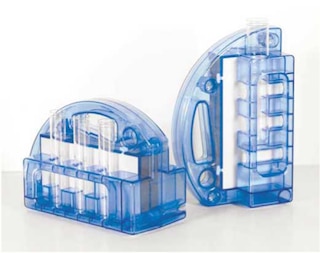
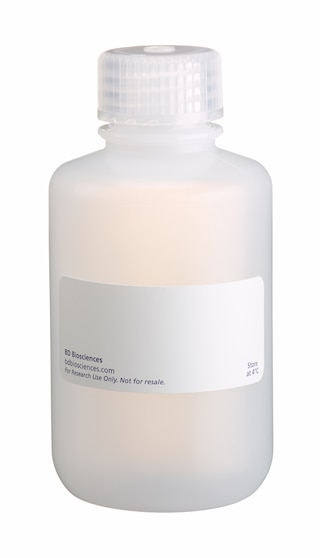
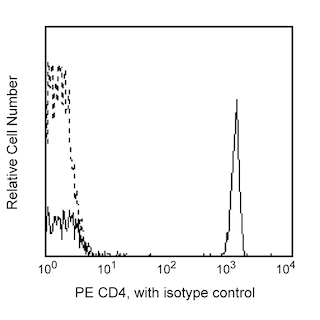
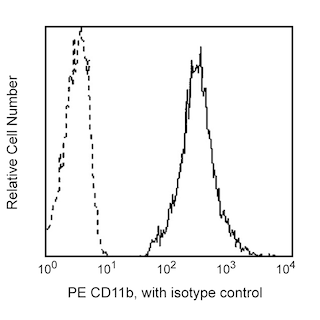

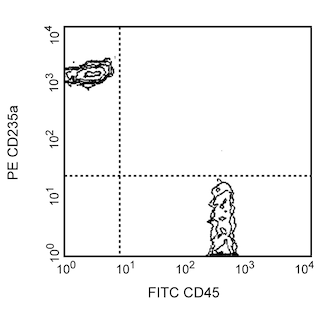
| Description | EntrezGene ID |
|---|---|
| Streptavidin Particles Plus – DM | N/A |
| Human Memory CD8 T Cell Enrichment Cocktail | N/A |
Please refer to Support Documents for Quality Certificates
Global - Refer to manufacturer's instructions for use and related User Manuals and Technical data sheets before using this products as described
Comparisons, where applicable, are made against older BD Technology, manual methods or are general performance claims. Comparisons are not made against non-BD technologies, unless otherwise noted.
For Research Use Only. Not for use in diagnostic or therapeutic procedures.